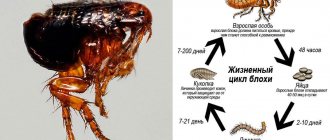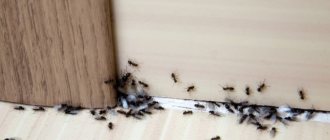Chemicals used to kill rodents
Chemical agents for rat control include poisons and preparations that serve to protect materials from damage by rodents. They are used in the form of food baits and powders for pollinating burrows.
Zookoumarin
White or light gray odorless powder. The active substance is warfarin, a Class 3 moderately hazardous chemical. It demonstrates the greatest effectiveness in the fight against gray and black rats, as well as voles - in one hundred percent of cases, taking the chemical inside leads to the death of the rodent. The lethal dose for a rat is 12-15 grams of the drug. Less effective against house mice - the drug kills them only in every second case.
Nutcracker
It is a blue or red dough-like mass in ten-gram bags. The active toxic substance is brodifacoum. It is laid out in special containers under cover. To catch rats, you should place the drug in the amount of 2-3 sachets near the burrows and along the path of the rodents.
After exterminating the rats, the remainder of the product and the corpses of rodents should be destroyed.
Rat death
The drug is available in two versions: Rat Death 1 and Rat Death 2, which differ from each other in the active ingredient. In the first case, the toxic substance is brodifacoum, in the second case, bromadiolone. Brodifacoum is more toxic and kills rodents faster than bromadiolone.
The product contains flour, flavorings and food additives. An unsuspecting rodent eagerly eats the product, but after a while the poison begins to take effect and the animal dies.
Mortorat
The bait has a mummifying effect, that is, it turns the rat into a dried-out corpse that does not emit an odor. Produced in the form of briquettes from natural products with active substances. One package contains 15 lethal doses. The death of the animal occurs a week after ingesting the poison.
Krysid
An organic substance that is poisonous to rats and mice and harmless to humans and domestic animals. The lethal dosage for rats is 4.5 grams of the drug. The death of the rodent, depending on the dose taken, occurs on the first or third day. To increase the effectiveness of the trap, it is recommended to feed the rats with non-toxic products for a week, which will then be used as bait.
Biological destruction
Now you can connect heavy artillery. The simplest and most effective way is deratization: using a special mouse poison. It is laid out in corners, along walls, on horizontal surfaces. Particular attention is paid to places from which hordes of mice crawl out.
It is logical to assume that only adults will die from the poison, but this is not a reason for concern: mouse offspring without parents will not last long.
When working with poison, do not forget about your own safety:
- protect hands with rubber gloves;
- do not smoke or eat;
- Afterwards, be sure to throw the gloves in the trash and wash your hands with soap.
Important! All found corpses of dead animals are collected (this must also be done with gloves) and destroyed by burning; in extreme cases, they are buried in a vacant lot, having previously been sprinkled with bleach.
Such simple actions will prevent the spread of possible infectious diseases carried by rodents.
Traps
In addition to standard rat traps, there are more humane traps, such as live traps. They do not kill the animal, but only slam it in a confined space, preventing it from getting out. Also on the market are glue-based traps, which are a container filled with glue. The bait is placed on the sticky surface, and the animal, having “bought” the bait, remains tightly glued to the trap.
Plastic bottles
There are homemade options for traps made from plastic bottles. A bottle with a cut off neck and bait inside is placed horizontally on the edge of the table and tied with fishing line to the table. A rodent that crawls inside a bottle for food pushes the bottle down and remains suspended inside the trap. The trap works for small rats.
Cans of oil
The trap can be made from a three-liter bottle by pouring 4 tablespoons of sunflower oil into it. The jar is installed in a horizontal position, the bait is placed inside. When the rodent is inside, the jar should be immediately turned vertically, neck up. Because of the oil, the rat will not be able to get out. The disadvantage of this trap is that it cannot be automated - you will have to monitor the trap so that the rodent does not notice you.
Fighting with physical methods
If mouse traces have just appeared in the garage, then you can try to do without chemicals. To do this, you need to clean it and place cage traps.
On a note!
Mousetraps can serve as a preventative against rodents. If paper and food are stored indoors, then it is worth setting up several traps with bait.
There are several types of traps:
- Adhesive. It is a sticky substance for mice that is applied to a piece of cardboard or wood. The bait is placed near the holes. The mouse will run to the smell of glue and stick to the trap. She won't be able to get out of it.
- Mousetrap. A wooden structure, inside of which a fragrant bait for mice is placed: a piece of bread with butter, lard, fruit. When the animal reaches for a treat, the device slams shut and the rodent dies on the spot.
- Live trap. It is made in the form of a cage with a bridge. An edible bait is placed at the end of the bridge. A mouse runs across a bridge that tilts under its weight, ends up in a cage and cannot get out. A man releases an animal into the wild.
The last method of control allows you to save the life of the mammal. But to prevent it from returning to the garage, it should be released far away.
Physical methods of control will not be able to rid the garage of rodents forever.
Mice in the garage
How do rats get into the garage?
Almost all garage owners use them not only as a place to park a car.
Quite often, an ordinary garage becomes a place for storing various products and preservation.
For example, many people prefer to leave potatoes and cereals in the garage. Of course, this is what attracts rodents to the room.
Because there are good conditions for them there. After all, people rarely visit their garages, so rats feel very at ease there.
But how do rodents get into garages? After all, at first glance it seems that the structure is quite reliable.
Therefore, even rodents should not get into it. However, the human eye is unable to notice those loopholes that can be exploited by rodents.
Even small gaps between the materials that serve as the basis for the structure are a kind of path for rodents.
Especially if the garage is built in such a way that it has an open type of ventilation. Using it, rats can also get into the room
How to remove rodents from the garage?
If you nevertheless encounter such a problem as rodents in the garage, we recommend that you do not delay getting rid of them.
It must be remembered that rats reproduce quite quickly. Consequently, before you even blink an eye, a whole brood of rats will live in your garage.
And it will be much more difficult to get rid of these uninvited guests when their numbers become more significant.
Repellers
So, the first means to combat any rodents is a repeller. This is a humane method; it does not kill the rodent, but forces it to leave the room. It is a modern invention that was created for one purpose: to repel rodents from indoors.
The operating principle of these devices is quite simple: they all produce sounds (or, more precisely, ultrasound) that humans are unable to perceive. These sounds can only be heard by rodents, since their hearing is much more developed than human hearing. The frequency range of ultrasonic repellers is from 18 to 70 kHz.
Rodents don’t like this kind of “music” at all. And therefore they prefer to stay as far as possible from the premises in which repellers are installed. Small mice and huge rats immediately leave the room after turning on this device.
The most popular and effective repeller is “Hawk”. Specifically, for small spaces like a garage, the Yastreb-200 model is ideal.
It has many frequency modulations - this prevents rodents from adapting and getting used to these sounds. In addition, the device has an affordable price and excellent build quality.
But, like any other device of this type, it has several disadvantages:
- the device must always be connected to the electrical network;
- in a room with several solid partitions, the sound will be reflected, so there is a high risk that the ultrasound waves will not reach;
Based on this, we can conclude that the repeller is ideal for use in the garage. Here is a video proof that the device works effectively!
Effective remedies for getting rid of rats in the garage
How to get rid of rats in the garage
How to get rid of rats in the garage forever? This question worries many motorists and those who use garages exclusively for storing things, workpieces, etc.
It is the food products present in the garage: cereals, potatoes, that are the main reason that rodents are happy to settle in this room. At the same time, while looking for food, they do not stand on ceremony with the vehicle.
They easily gnaw holes in metal, plastic parts, and textile upholstery. In addition to material damage, they are especially dangerous because they become carriers of many diseases.
Where do mice live and how do they get into the car?
At first glance, it is very difficult to get into a car, but in fact, long-eared pests get there in all sorts of ways:
- through open windows or doors;
- from under the hood;
- through a hole in the engine shield;
- through rusty holes that are not visible due to their location.
Mice can live in a wide variety of places in the car:
- in the floor under rugs;
- in the trunk;
- in the glove compartment;
- in the door pocket;
- under thresholds;
- near the interior heater motor.
Once inside the car, rodents can damage wiring, sound insulation, and chew gaskets. Therefore, immediately after detection, you need to get rid of mice in the car.
General information about rats
Rats easily adapt to any living conditions, tolerate both high and very low temperatures, just like camels are able to go without food and water for a long period of time, and the most unpleasant thing is that they easily adapt to poisons and other control measures used against them, thanks to highly developed instincts, special physique and innate, relatively high intelligence and memory for such a small creature. Rats settle in large colonies, as close as possible to their important breadwinner - humans.
How to get rid of rats in the garage using folk remedies or, for example, using a rat trap?











